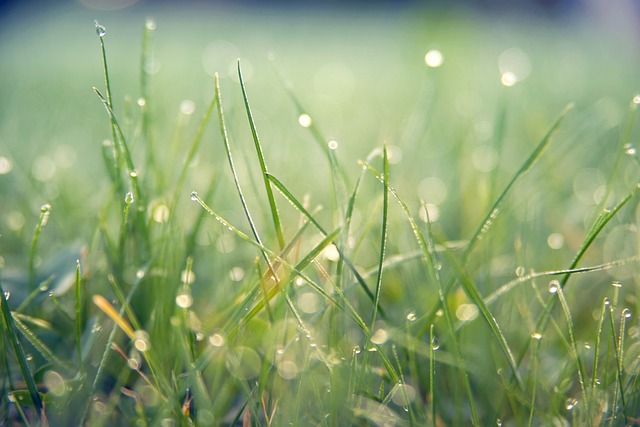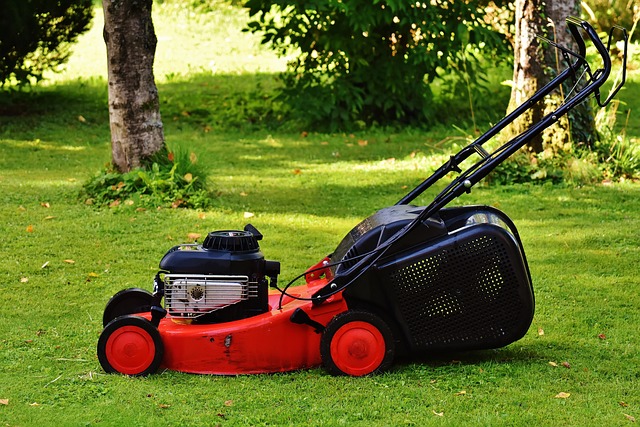In Wheat Ridge, managing vegetation along rights-of-way uses a combination of herbicide application and sustainable practices. Selective herbicides target specific plants while preserving desirable vegetation, with timely application maximizing effectiveness. Environmental concerns have led to the popularity of alternative methods like mechanical control, bio-control agents, and less toxic herbicides. Understanding local flora and following manufacturer guidelines ensures precise, eco-friendly lawn care that minimizes ecological impact and promotes soil health.
In the pursuit of sustainable landscape management, exploring eco-friendly alternatives to traditional herbicides is a growing trend. This article delves into the world of lawn plant treatment options, specifically focusing on the effective use of herbicide application for managing right-of-way vegetation in Wheat Ridge. We’ll uncover sustainable alternatives, offering a comprehensive guide to implementing eco-conscious practices without compromising on results. Discover how these methods revolutionize local vegetation management.
- Understanding Herbicide Application for Right-of-Way Vegetation Management
- Sustainable Alternatives to Traditional Herbicides
- Implementing Effective Lawn Plant Treatment Options in Wheat Ridge
Understanding Herbicide Application for Right-of-Way Vegetation Management

In Wheat Ridge, managing vegetation along rights-of-way is essential for maintaining clear visibility and safety. Herbicide application stands out as a key strategy in such efforts due to its efficiency and targeted nature. It involves the careful use of chemicals designed to control or eliminate unwanted plants, focusing specifically on areas like roadsides, rail lines, and utility corridors. This method offers several advantages: it’s cost-effective compared to manual weeding, quick-acting, and can provide long-lasting results.
Understanding herbicide application requires knowledge of different active ingredients and their modes of action. Selective herbicides target specific plant species while minimizing harm to desired vegetation. These are particularly useful for managing a mix of grasses and broadleaf plants common in rights-of-way. Timing is crucial; applying herbicides during the right growth stage ensures maximum effectiveness. Proper application techniques, including mixing ratios and equipment calibration, must be followed strictly to avoid off-target effects on non-target plants and water bodies.
Sustainable Alternatives to Traditional Herbicides

In recent years, there’s been a growing interest in sustainable lawn care practices, especially when it comes to managing right-of-way vegetation in urban areas like Wheat Ridge. Traditional herbicides have long been the go-to method for controlling unwanted plants, but their environmental impact has sparked concerns among environmentally conscious residents and professionals. Fortunately, several alternative treatments offer effective solutions without compromising sustainability.
One such approach is mechanical control, which involves physical removal of weeds through mowing, digging, or hand weeding. This method not only avoids the use of chemicals but also promotes a healthier soil ecosystem. Bio-control agents, such as specific plant species or insects, can also be employed to suppress weed growth naturally. For targeted applications, selective herbicides that are less toxic and more environmentally friendly are available, offering precise control while minimizing off-target effects. These sustainable alternatives empower residents and landscaping professionals in Wheat Ridge to maintain attractive right-of-way vegetation without relying heavily on traditional herbicide application practices.
Implementing Effective Lawn Plant Treatment Options in Wheat Ridge

In Wheat Ridge, implementing sustainable treatment options for lawn plants begins with understanding the unique challenges posed by local flora and environmental conditions. One effective strategy involves targeted herbicide application for right-of-way vegetation. This approach allows for precise control of unwanted plants while minimizing the impact on desirable turfgrass species. By selecting herbicides that are environmentally friendly and applying them according to manufacturer guidelines, residents can achieve long-lasting results without harming local ecosystems or water sources.
Additionally, integrating organic methods such as manual weeding, mulching, and compost application further enhances sustainability. These practices not only reduce the reliance on chemical inputs but also contribute to a healthier soil microbiome. In combination with regular monitoring and maintenance, these treatment options can transform Wheat Ridge lawns into vibrant, low-maintenance spaces that thrive in harmony with their natural surroundings.
In conclusion, managing vegetation along rights-of-way in Wheat Ridge can be both aesthetically pleasing and environmentally responsible through strategic herbicide applications. By understanding the impact of traditional herbicides and exploring sustainable alternatives, such as organic methods and targeted treatments, we can achieve lush landscapes while preserving ecological balance. Implementing these practices not only benefits local ecosystems but also ensures long-term cost-effectiveness for Wheat Ridge’s maintenance efforts.
